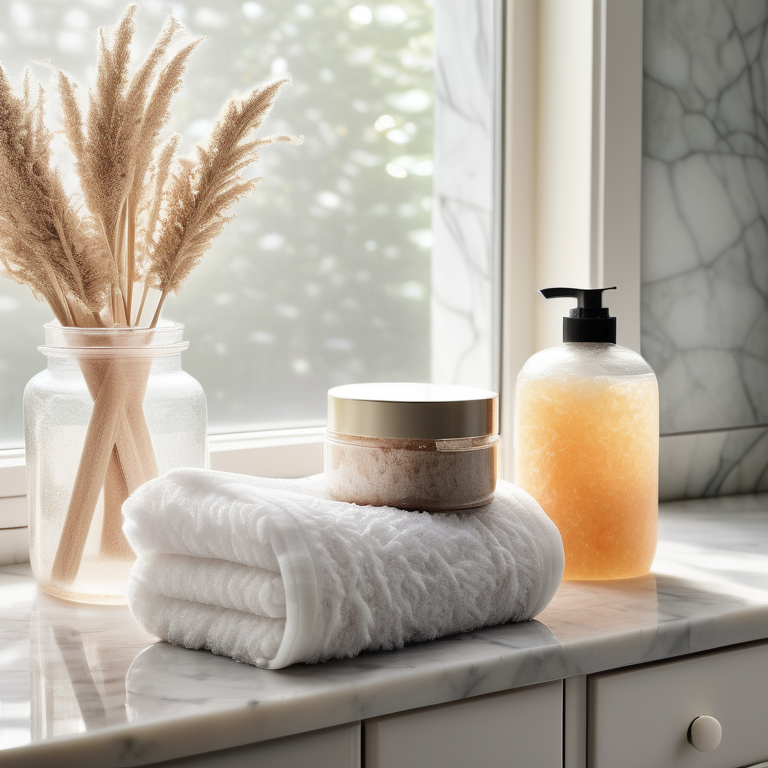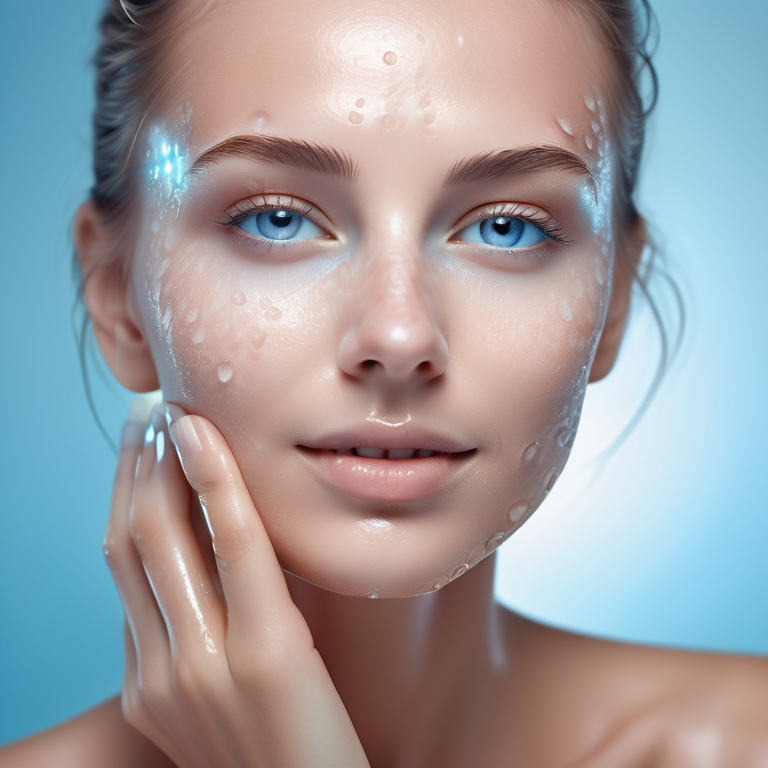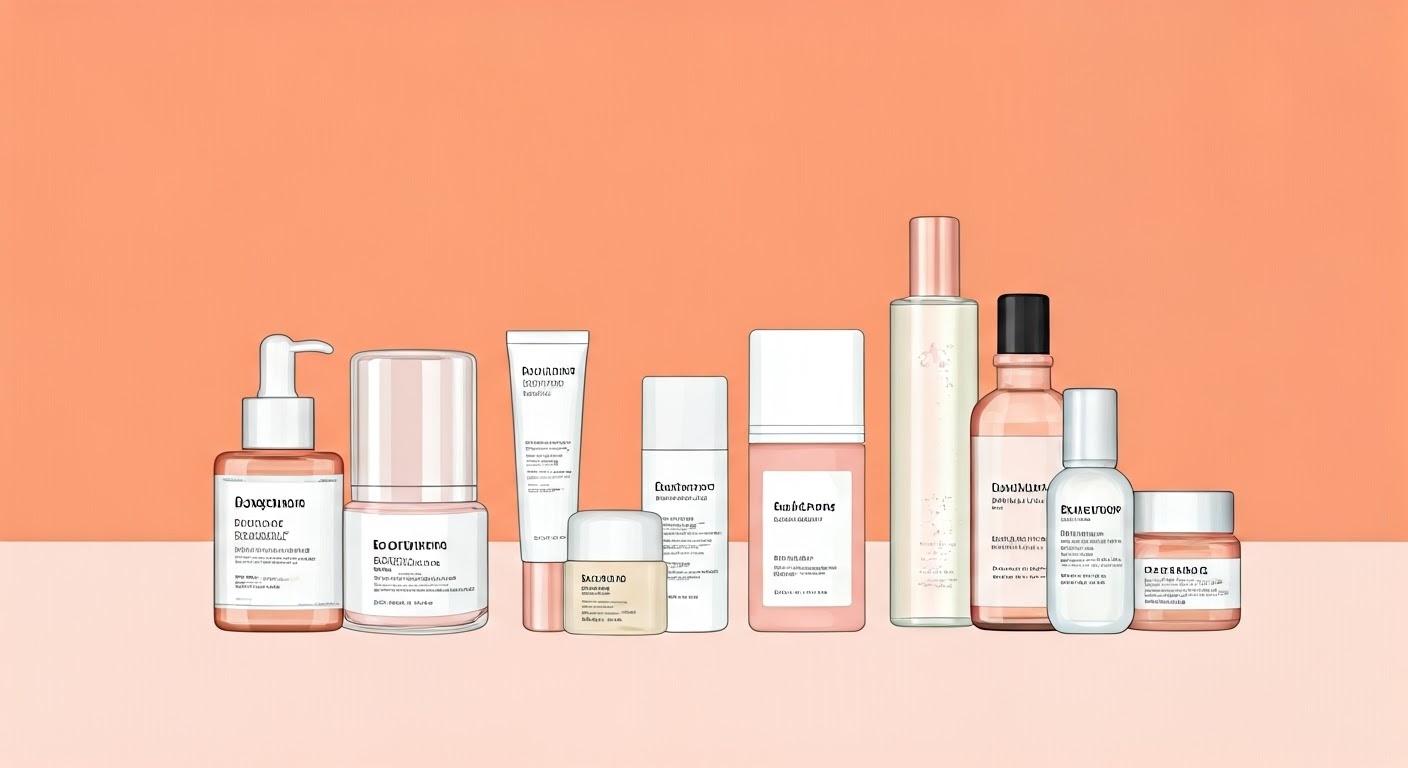How Often Should I Exfoliate My Skin? Find Out Here


Key Highlights
- Exfoliation helps remove dead skin cells and reveals smoother, more radiant skin
- The frequency of exfoliation depends on factors such as skin type, sensitivity, and specific concerns
- Physical and chemical exfoliation are the two main types, each with its own benefits and considerations
- For dry or sensitive skin, exfoliating once a week is a good starting point
- Oily or combination skin can tolerate more frequent exfoliation, up to 2-3 times a week
- It's important to choose the right exfoliation method and products for your skin type to avoid irritation or over-exfoliation
Introduction
Exfoliation is important for smooth, radiant skin. How often to exfoliate depends on your skin type and concerns. Exfoliation removes dead skin cells, revealing brighter skin. It speeds up skin cell turnover, improving complexion. But, over-exfoliating can harm your skin. Choose gentle products and correct frequency for best results.
Understanding Exfoliation: Why It's Essential for Healthy Skin
Exfoliation is essential for maintaining healthy skin because it helps remove the buildup of dead skin cells on the skin's surface. When these dead cells accumulate, they can make the skin look dull and rough. By exfoliating regularly, you can accelerate the skin cell turnover process, leading to a more radiant complexion and smoother skin texture. Exfoliation also helps even out skin tone and can fade dark spots over time. Additionally, regular exfoliation can minimize and prevent breakouts by reducing the buildup of dead skin cells that can clog pores and lead to blemishes.
The science behind skin renewal and exfoliation
Skin cell turnover is how new cells replace old ones for healthy, radiant skin. Factors like age affect turnover. Young people have faster turnover; older people have slower turnover.
Exfoliation accelerates skin cell turnover by removing dead cells, revealing brighter, smoother skin. Regular exfoliation stimulates collagen production for elasticity and firmness. It enhances skincare absorption and improves overall skin health, combating dullness and acne while reducing wrinkles and pigmentation.
Overall, understanding the science behind skin renewal and exfoliation can help you make informed decisions about how often to exfoliate and which exfoliation methods to use for your specific skin type and concerns.
Immediate and long-term benefits of regular exfoliation
Regular exfoliation offers both immediate and long-term benefits for your skin. In the short term, exfoliating can instantly brighten your complexion by removing the buildup of dead skin cells and revealing the fresh, new skin underneath. It can also improve the texture of your skin by smoothing out rough patches and minimizing the appearance of fine lines and wrinkles.
In the long term, regular exfoliation can help even out skin tone and fade dark spots over time. By removing the outer layer of dead skin cells, exfoliation can reduce the pigment responsible for discoloration and promote a more even complexion. Additionally, exfoliating can help minimize and prevent breakouts by reducing the buildup of dead skin cells that can clog pores and contribute to acne.
Overall, regular exfoliation can lead to healthier, more radiant skin with improved texture and tone. However, it's important to find the right balance and frequency of exfoliation for your skin type to avoid irritation or over-exfoliation.
Types of Exfoliation: Chemical vs. Physical
Spoiler alert: There's no 100% objective answer as to which type of exfoliator is the best, though most experts do caution you away from over-exfoliating with physical scrubs
Exfoliation can be achieved through two main methods: chemical exfoliation and physical exfoliation. Chemical exfoliation, also known as chemical exfoliators, involves the use of acids or enzymes to dissolve the bonds between dead skin cells, allowing them to be easily removed. Physical exfoliation, on the other hand, uses physical friction to manually scrub away dead skin cells.
Chemical exfoliation can be more gentle and suitable for sensitive skin, while physical exfoliation can provide a more immediate and satisfying exfoliating sensation. Both methods have their benefits, and the choice between the two often comes down to personal preference and skin type.
An overview of chemical exfoliants: AHAs, BHAs, and PHAs
Chemical exfoliants are a popular choice for exfoliation due to their effectiveness and versatility. There are several types of chemical exfoliants, including alpha-hydroxy acids (AHAs), beta-hydroxy acids (BHAs), and polyhydroxy acids (PHAs).
AHAs, such as glycolic acid and lactic acid, work by gently dissolving the bonds between dead skin cells, revealing smoother skin and improving overall skin texture. BHAs, such as salicylic acid and beta hydroxy acids (BHAs), are particularly effective at penetrating the pores and reducing acne breakouts. PHAs, like gluconolactone and lactobionic acid, are a gentler alternative to AHAs and can be well-tolerated by sensitive skin.
Chemical exfoliants are found in skincare products like cleansers, toners, serums, and masks. Start with a lower concentration when incorporating them into your routine, gradually increasing as your skin adjusts. Always use sunscreen due to increased sun sensitivity. Check ingredient lists for AHAs in products like serums and masks.
Customizing Your Exfoliation Routine
Customizing your exfoliation routine is essential to ensure that it suits your skin type and addresses your specific needs. Understanding your skin type is the first step in determining the appropriate frequency and method of exfoliation. For example, if you have dry or sensitive skin, you may need to exfoliate less frequently and use gentler exfoliants to avoid irritation. On the other hand, if you have oily or combination skin, you may be able to exfoliate more frequently and use stronger exfoliants to control excess oil and prevent breakouts. It's important to listen to your skin and adjust your exfoliation routine accordingly.
How to Determine Your Skin Type and Needs
Determining your skin type is crucial in understanding how often you should exfoliate and what products to use. Here's a quick guide to identifying your skin type and a link to Skin Type Calculator to help you out:
|
Oily skin |
Oily skin is characterized by excess sebum production, leading to shininess and breakouts. For oily skin, exfoliate two to three times a week to remove dead skin cells and unclog pores. |
|
Dry Skin |
Dry skin lacks moisture and can feel tight or flaky. Exfoliating once a week can help remove dry, dead skin cells and promote a smoother texture. However, it's important to choose gentle exfoliants and follow up with a hydrating moisturizer to prevent further dryness. |
|
Normal skin |
Normal skin is well-balanced, neither too oily nor too dry. Exfoliating two to three times a week can help maintain the skin's natural radiance and texture. |
|
Combination skin |
Combination skin is a mix of oily and dry areas. If you have combination skin, you may need to customize your exfoliation routine accordingly. Focus on exfoliating the oily areas of your face more frequently, while being gentle on the drier areas. |
By understanding your skin type and its specific needs, you can tailor your exfoliation routine to achieve the best results.
How Often Should I Exfoliate My Skin?
Tailoring exfoliation frequency to your skin's tolerance
In addition to considering your skin type, it's important to pay attention to your skin's tolerance when determining how often to exfoliate. Some individuals may have more sensitive skin that is prone to irritation and redness, which may require a gentler approach to exfoliation.
For sensitive skin, it's generally recommended to exfoliate once a week or even less frequently. This allows the skin to recover and reduces the risk of irritation. It's also important to choose exfoliants specifically formulated for sensitive skin and to avoid harsh scrubbing or abrasive tools.
If you have normal or less sensitive skin, you can gradually increase the frequency of exfoliation to two to three times a week, depending on how your skin responds. However, it's crucial to monitor any signs of irritation or dryness and adjust your exfoliation routine accordingly. It's always better to err on the side of caution and listen to your skin's needs.
Step-by-step guide to exfoliating your face properly
Exfoliating your face properly can help remove dead skin cells and reveal a smoother complexion. Here's a step-by-step guide to exfoliating your face:
- Start by cleansing your face with a gentle cleanser to remove any dirt or makeup.
- Apply a small amount of exfoliating product to your fingertips or a facial brush.
- Gently massage the product onto your skin using circular motions. Be careful not to apply too much pressure or scrub too vigorously, as this can cause irritation.
- Pay attention to areas with rough or dry skin, such as the nose, forehead, and chin.
- Rinse your face thoroughly with lukewarm water to remove the exfoliating product.
- Pat your skin dry with a clean towel and follow up with a moisturizer to hydrate and protect your skin.
Remember, it's important to choose an exfoliating product that suits your skin type and to consult with a dermatologist if you have any concerns or questions about your exfoliation routine.
Best practices for body exfoliation: Techniques and tips
Body exfoliation is an effective way to remove dead skin cells and improve the texture of your skin. Here are some best practices and tips for body exfoliation:
- Start with a warm shower or bath to soften the skin before exfoliating.
- Use a body scrub or exfoliating glove to gently massage the skin in circular motions.
- Pay extra attention to rough areas like elbows, knees, and feet.
- Rinse thoroughly to remove all the exfoliating product.
- Follow up with a moisturizer to hydrate and nourish the skin.
Remember to be gentle when exfoliating your body to avoid irritating or damaging the skin. It's also important to choose exfoliating products that are suitable for your skin type and to moisturize regularly to maintain the skin's hydration.
Common Exfoliation Mistakes to Avoid
While exfoliation can be beneficial for your skin, it's important to avoid common mistakes that can lead to over-exfoliation and skin damage. So, How often should you exfoliate your skin? Here are some mistakes to avoid:
- Over-exfoliating: Exfoliating too frequently or using harsh exfoliants can lead to irritation, redness, and dryness.
- Using abrasive tools: Scrubbing too hard with brushes or loofahs can cause micro-trauma and damage the skin's surface.
- Ignoring your skin's needs: It's important to listen to your body and adjust your exfoliation routine according to its sensitivity and tolerance.
- Neglecting to moisturize: Exfoliation can remove natural oils from the skin, so it's crucial to moisturize properly to restore hydration and protect the skin's barrier.
By avoiding these common mistakes, you can ensure that your exfoliation routine is effective and beneficial for your skin.
Over-exfoliation signs and side effects
Over-exfoliation can have negative effects on your skin. Some signs and side effects of over-exfoliation include:
- Redness and irritation: Excessive exfoliation can cause redness, inflammation, and sensitivity.
- Peeling and dryness: Over-exfoliation can strip away the skin's natural oils, leading to dryness and flakiness.
- Increased sensitivity: The skin's barrier can become compromised, making it more prone to irritation and damage.
- Breakouts: Over-exfoliation can disrupt the skin's balance and lead to breakouts and congestion.
If you notice any of these signs or side effects, it's important to give your skin a break from exfoliation and focus on gentle, hydrating skincare to restore balance and repair the skin's barrier.
Misconceptions about exfoliating products and tools
There are some common misconceptions about exfoliating products and tools that can lead to confusion. Here are a few misconceptions debunked:
- Myth: Physical exfoliants are always harsher than chemical exfoliants. Reality: The intensity of exfoliation depends on the specific product or tool used, not solely on whether it's physical or chemical.
- Myth: Chemical exfoliants are always better than physical exfoliants. Reality: Both physical and chemical exfoliants can be effective, and the choice depends on individual preferences and skin type.
- Myth: Exfoliating every day is necessary for smooth skin. Reality: Exfoliating too frequently can lead to over-exfoliation and skin damage. It's important to find the right balance and listen to your skin's needs.
Understanding the facts about exfoliating products and tools can help you make informed decisions about your skincare routine and choose the best options for you.
Conclusion
Regular exfoliation plays a vital role in maintaining healthy, glowing skin. Understanding the science behind cell renewal and choosing the right exfoliation method for your skin type are key. Avoid common mistakes like over-exfoliation and tailoring your routine to your skin's needs. By customizing your exfoliation routine and following best practices, you can achieve a clear, smooth complexion. Remember, consistency is key for long-term benefits. Share this guide on social media to empower others in their skincare journey.
Frequently Asked Questions
How can I tell if I'm exfoliating too much or too little?
If you're exfoliating too much, you may experience redness, irritation, dryness, and increased sensitivity. On the other hand, if you're exfoliating too little, you may notice dullness, rough texture, and clogged pores.
Can exfoliating improve acne-prone skin?
Exfoliating can be beneficial for those who are acne-prone, as it helps remove dead cells and unclog pores. Chemical exfoliants like salicylic acid and physical exfoliants can be effective in managing acne when used as part of a comprehensive skincare routine.
Should people with sensitive skin exfoliate differently?
People with sensitive skin may need to take extra precautions when exfoliating. It's important to choose gentle exfoliants, such as mild chemical exfoliation or physical exfoliation with soft brushes, and to consult with a dermatologist, aesthetician or your esthetician for personalized advice.
How does age affect exfoliation frequency and methods?
As we age, our skin's texture, fine lines, and collagen levels change. Cell turnover also slows down. Adjusting the frequency and methods of exfoliation can help address these age-related changes and maintain a healthy appearance.











